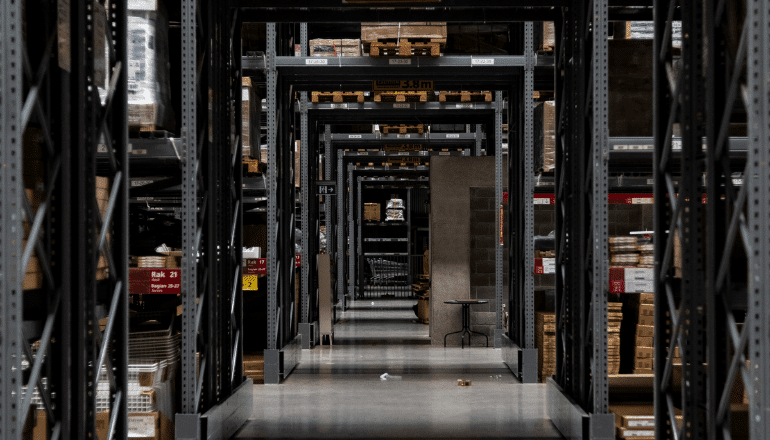Today’s retailers consistently hear they need an omnichannel marketing strategy and campaign to win the day. As the latest buzzword, omnichannel can feel like a confusing term. It may even be something that causes retailers to double down on what’s worked in the past, especially online. Resist that urge, because the marketing principle at hand is a smart one that customers already enjoy.
In simplest terms, omnichannel retail efforts are campaigns that use every channel at your disposal to reach customers with a unified experience. Everything you do has a look and feel that’s similar, no matter how they interact with you. You help customers buy how they want, get goods how they want, and drive the interaction.
The customer is in the driver seat.

Omnichannel is a straightforward concept that seems simple but gets incredibly complex and technical when putting it into action. Yes, the whole is greater than the sum of its parts¸ but you will need to engineer those parts to work for your customers specifically. Video provides an opportunity here by being a highly engaging medium that can be shared across channels and perform well with a wide audience range.
Omnichannel means being where your customers are with a unified offer. You’re working across in-store, mobile, online, social, and more. And all of those locations have a place for video.
SEO and general sales information
There are some standard ways that including video in your omnichannel campaigns provide a lift. We’ll highlight the two biggest ones quickly before we dive a little deeper into usage, incentives, and why customers respond well to video.
First on our list is the SEO benefit of video. You’ve got a few different elements at play here. First, videos tend to improve your SEO initially. They’re rich content that generate clicks and can help you do well when paired with traditional digital ad spend. It’s a good mix. For instance, including video on landing pages drives a 157% increase in organic traffic from SERPs.
Videos on your pages can also lower your bounce rate, with some reports saying people will spend twice as long on your page if there’s something to watch.
You can also further your SEO benefits by using video title tags and descriptions, enabling comments, and providing a transcript on the page. The mix of those is up to you, but it makes video a smart inclusion because of boosts to brand recognition, product recall, and campaign engagement.
Secondly, conversion rates tend to increase when video content is used. HubSpot’s State of Marketing reports have found that video increases conversions up to 80% when on a landing page (2017 version). Its current report notes that more than half of consumers want to see a video and that video has become the most popular media in content strategy.
If you’re using video in your email marketing as part of an omnichannel effort, it can also increase click-through rates while decreasing unsubscribe rates.
Most marketers know that video is a proven tool for generating higher interaction and sales. So, what we’ll touch on now is why this is important as part of an omnichannel retail campaign, helping you drive both benefits in your retail and ecommerce operations.
Importance of video and context
Video generates 1200% more shares than both images and text. It’s highly engaging and, when done right, it can quickly spread beyond your marketing and sales efforts. Consumers are using a wide range of devices and services to connect with brands, giving your marketers greater reach potential and the ability to take part in the moments of consumers’ lives.
Getting the context of video right allows you to be more relevant, no matter where you are. We’ve seen this with the rise of TikTok across social — including how much it gets shared on Twitter — which is just the latest outgrowth of our love of video. Older marketers will have similar stories for YouTube, Instagram’s stories, Periscope, and many more.
The important part is building in the right omnichannel context for your brand at the same time.
For instance, when RadioShack added a mobile-friendly store locator with click-to-call and GPS map support, it saw at least 40% of users who interacted go to a physical store and 85% that arrived made a purchase. There were opportunities for working across mediums and locations.
In video, there are highly complex tools you can use to make interactive elements and ad units customizable in a similar fashion. Or, you can use more standard click-to-take-action elements and have them lead customers to a responsive page with relevant product and store information.
For advanced brands and retail locations, you can send customers an SMS message or email with a video that highlights the sales going on in the store at which they’re currently shopping. When you’ve got purchase history aligned with customer information, you can also prompt users to consider products that work in tandem with past purchases.
Video will engage your users. Marketing strategy and campaign priority are to ensure that the context of what they see and what the video does (such as what actions it supports) align with your targets. In omnichannel, that often means getting users to the pages most relevant to them, not only based on the products they clicked but also using information in their browsing history and location for what you display.
Going seamless
Your audience is going to have a wide range of demands, but as Millennials begin to dominate more and more sectors of the economy, they’re proving to be a good segment for every industry to watch. One trend in how Millennials shop is the desire for their experience with you to be seamless.
Whether you’re online-only or also have a mix of brick-and-mortar locations (yours or from retail partners), the average Millennial wants to engage with your brand in multiple ways. They are concerned with company operations on a big-picture level, such as corporate responsibility, while also wanting to see and feel products. When convenient, many will go into stores to directly interact with consumer goods before a purchase.
However, omnichannel campaigns will need to provide them with pricing and availability information to be successful. Roughly 90% know what they’re going to buy when walking through a store’s doors, and your online efforts should set expectations on what they can get and if any deals are available.
Video is a strong factor here because it is easy to create, contain, and replace. Containers on your site, mobile app, or spots in your ad campaigns can quickly be changed and the same videos can work well across each location.
Start with internal education
Most sellers like to start their video efforts with outward facing tools, ads, emails, and other elements designed for your customers first. It’s natural, but you might consider resisting that temptation.
Video can be an important and engaging tool for your internal teams, teaching them more about your products, how customers are responding, and ways to serve them better. Teams, especially customer support and service, are product experts. That makes them among the best to review your video elements before they’re widely available.
Think about a new ad that shows how easy your product makes someone’s life. It’s a 15-second demonstration designed to run online and on in-store displays. You’ve had marketing and product teams look at it, and you know the “persona” understands it. Now, reach out to customer service (CS) to see if the actual customer will.
CS teams can give you feedback on the language and content of the ad, note if they get questions around this topic, and help you refine content to be most useful. At the same time, showing campaigns and new video elements (especially if you’re smart and leverage them as FAQs!) helps these teams understand the context your customer has.
Make video available company wide so CS and other customer interaction points know what the consumer is seeing, what they may be asking questions about, and how to put pieces in the right context. Plus, if they’re learning these tools, they can create similar content for each other to get better support and collaboration between your teams.
About that FAQ
We’re big fans of video because it’s easy to understand. Using the right GIF and short-form tools, you can quickly create a series of videos that show your products in their most-used context. By turning boring text into quick, engaging content, you have customers who are better able to understand product benefits.
Support teams, interactive online sales channels (think social), your email campaigns, and the displays you have in physical locations can all leverage these elements to help customers. Spend a little bit to create fun answers to questions and you’ve got something that is quick, useful, and shareable.
It saves people the pain of digging through a long list of questions and text. Plus, if you’re already embracing the chatbot as the first line of CS, videos are a natural thing for them to share.
The same information matters to every channel
Videos can be incredibly engaging because they allow you to highlight the most essential information to your customers. This can be price, showing how a product is used, or showcasing how you make people feel when they use your product.
Plus, studies have found that the average video viewer retains up to 95% of the information and messaging they watch, compared to just 10% when reading.
Coca-Cola does this amazingly well with its ad campaigns across the years focusing on people enjoying a Coke together. There’s smiling, laughter, tasty food, and friends all engaging with each other, with a few cans or bottles in the background. The ads help us feel that experience.
That connection and feeling are important on every channel and location where you sell. It’s important in your in-store displays, ads or messages piped throughout your locations alongside music, digital, print, radio, and more. Every campaign benefits.
And this includes your personality and style that live across the web. Showcase yourself! Sephora does this well with on-page ads that show its mobile presence, in-store flyers, video content and more.
Video is a simple but effective way to deliver those feelings or other essential information to all your channels with a single piece. Creating short ads can make them easy to share on Twitter or promote on Instagram, add to YouTube for direct viewing as well as pre-roll, and land on TV as well as digital streaming platforms.
Putting video central to your omnichannel efforts gets your message everywhere and provides the most important context to potential customers, regardless of where they are or how they find you. Make the most of it by adding subtitles natively to online content, so someone who sees your ad or video shared on social and in other places still gets the whole picture even if their sound is off.
Marketplaces are advertising, too
An important note about omnichannel campaigns is that they’re not just about selling across every location. Every channel you use is also, simultaneously, a marketing channel. Perhaps the best option for omnichannel retailers is to use all of the places you sell online — your webstore, social channels, and even third-party markets like Amazon — as a place to advertize your brand.
When looking at them together, your marketplaces and online efforts are all a unified lead-gen and customer acquisition tool. Showcase your unique offers and capabilities and plug ways for people to find you.
If some of your channels aren’t conducive (or don’t allow) direct retail location mentions, use your website in your company description and note your long history and wide range of products. Interested people may then search for you and ultimately find that you have a store nearby. If you’re Denver’s best place for bikes and accessories, then it’s time to mention that either using your slogan directly or note the year and location where you were founded.
Many marketplaces now allow product videos in your listings. These are the perfect opportunity to use your brand, slogan, and even mention cities or locations while also demonstrating your products. Or, do something as simple as list your website as part of your logo and watermark.
Customer interaction points are potential marketing and lead gen opportunities. Use video to show how great your products are and help people find you when they’re interested.
Explain your changes and added options
One thing we’re seeing right now is a major shift in how customers use every sales and service channel. The Covid-19 outbreak is shifting the economy and highlighting potential holes and concerns in many different retail models.
Omnichannel is actually one of your best bets to be ready now, or to get ready for something in the future. The nature of omnichannel helps align your business units and software, making it easier to push information across all channels.
Today, that’s going to need to be video in many big ways. For example, if you’re announcing store closures or reduced hours, video lets you standardize the message and show those specific locations. You can then show people on your website exactly how to shop and save from home.
Or, if you’re expanding to curbside delivery, walk customers through the entire process in a video. Show them how to order, if they need to pay online ahead of time, how to select different pickup times or locations, and what to do when they get to your store. If you have specific car lines or parking spaces (and for you big retailers, if you have specific signage!) show customers exactly what it looks like.
They’ll want a human face and voice to make them feel calm and prepared to continue to shop with you.
Whenever you make a change to operations or processes, video is a wonderful way to announce it. You can not only create a marketing message, but generate screenshots and recordings, or even GIFs, to show customers exactly how to navigate any change.
Consider in-store pickup for any time
When the current shift to our economy begins to settle and we understand what the new normal will be, companies with retail locations may be poised to pick up more customers by understanding new demands and having a streamlined inventory management system.
One such demand, in place even before the outbreak, was for free in-store pickup options. Millennials were already price sensitive and inclined to look for ways to save on shipping. Using your local stores as fulfillment centers for online channels makes it quick and easy to reach them.
Again, video is a solid explanation tool and makes it easy for customers to feel comfortable trying this new experience with you. If your store has the budget and room, consider an on-site display that shows your explanation too. It could push in-store shoppers to think of you next time they want to order online, helping prioritize you above Amazon or other online-only marketplaces.
Video will get you ready for the future
Let’s wrap up with something a little strange: reliance on video for initial touchpoints and final searches for your store are going to change in the future. The shift is potentially dramatic, but the industry is still uncertain.
This year, Gartner predicts that 30% of web browsing sessions will be done without a screen, dominated by voice-only search on smartphones. The assistants we carry around in our pockets will start doing a lot of the decision-making for us when it comes to results and information we get.
Here’s why video is essential to that experience, even as it goes screen-free.
Mastering video now will teach your team and brand how to make content and voice overs that last. There’s still time to test and learn how these assistants read us information and build it into your content, using the right words, spacing, pausing, etc. Then, in places where your campaigns and content live, you can provide the video text as a transcript and put some information into its metadata.
You can learn how to make your offer compelling — and even continue to refine marketing messaging across channels — by nailing the video’s visual and audio elements. Pair a strong transcript with high-quality visuals, voiceover, and on-screen subtitles and you have a piece of content that works for every audience.
Today’s audience demands that we meet them on their preferred channels. There’s no reason to expect tomorrow’s audience will be any different. Master video now, and you’ll be highly focused on getting audio, visuals, and engagement right. That’s the best prep for the future when we’re using fewer elements and content while relying on new systems and platforms, new channels and preferences, to reach customers. It’s the heart of omnichannel success.








